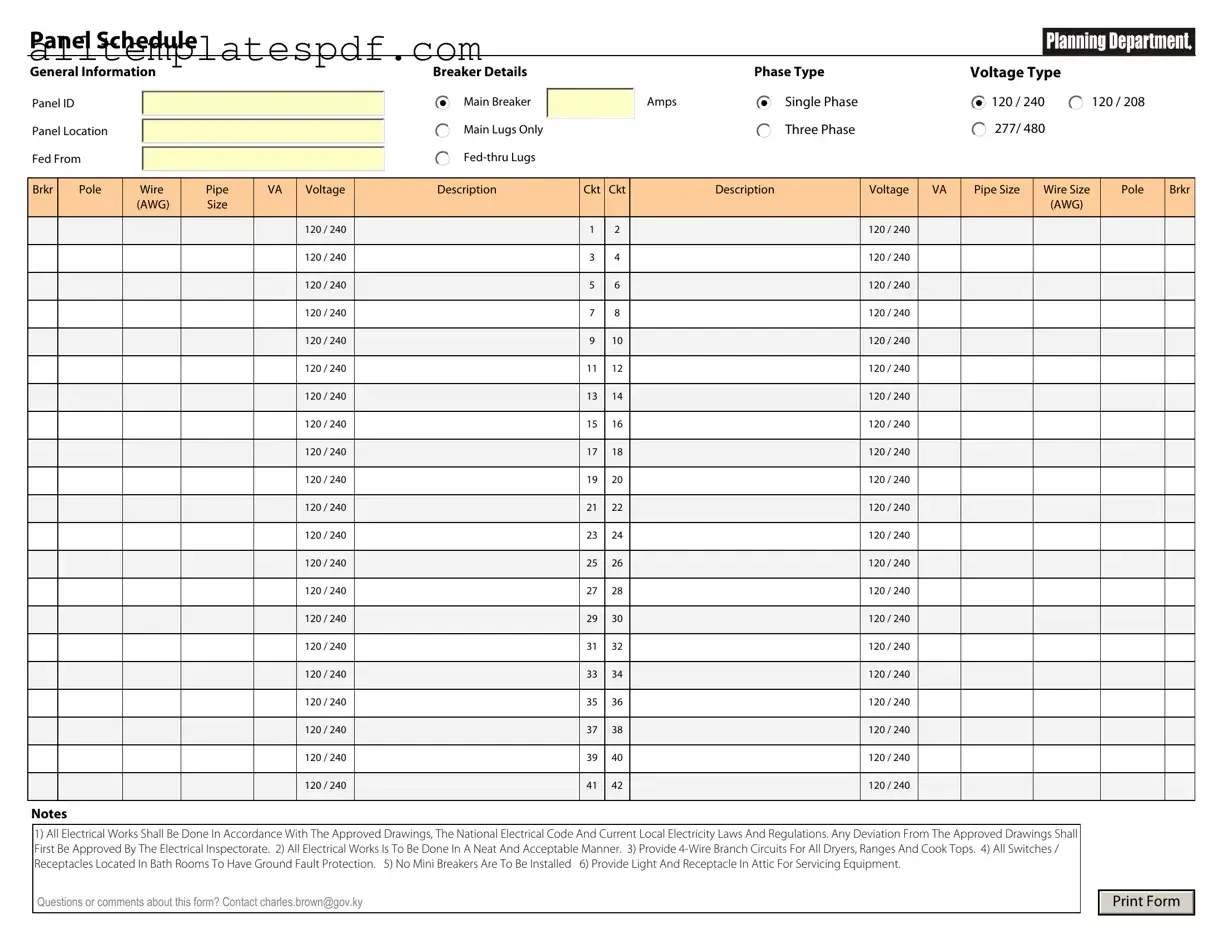Filling out the Electrical Panel Schedule form can seem straightforward, but many individuals make common mistakes that can lead to confusion and potential safety hazards. One prevalent error is failing to accurately label circuits. Each circuit should be clearly identified with a specific name or number. Without proper labeling, it becomes challenging to trace issues or perform maintenance, which can lead to dangerous situations.
Another frequent mistake is not including the correct amperage ratings for each circuit. Amperage ratings indicate how much electrical current a circuit can handle. If these ratings are incorrect, it can result in overloaded circuits, which may cause breakers to trip or, worse, create fire hazards. Ensuring that the correct amperage is listed is crucial for safety and efficiency.
Many people also overlook the importance of including the load calculations for each circuit. Load calculations help determine whether the electrical system can handle the demands placed on it. Neglecting this step can lead to overloading circuits, which can result in equipment failure or electrical fires. It’s essential to perform these calculations accurately and include them in the schedule.
Additionally, some individuals fail to update the schedule when changes are made to the electrical system. Whether it’s adding new circuits or removing old ones, keeping the panel schedule current is vital. An outdated schedule can cause confusion during troubleshooting or maintenance, leading to unnecessary delays and potential safety risks.
Lastly, a common mistake is not reviewing the form for accuracy before submission. Simple typographical errors or omissions can have significant consequences. Taking the time to double-check the information ensures that everything is correct and complete. A thorough review can prevent misunderstandings and enhance the overall safety of the electrical system.
